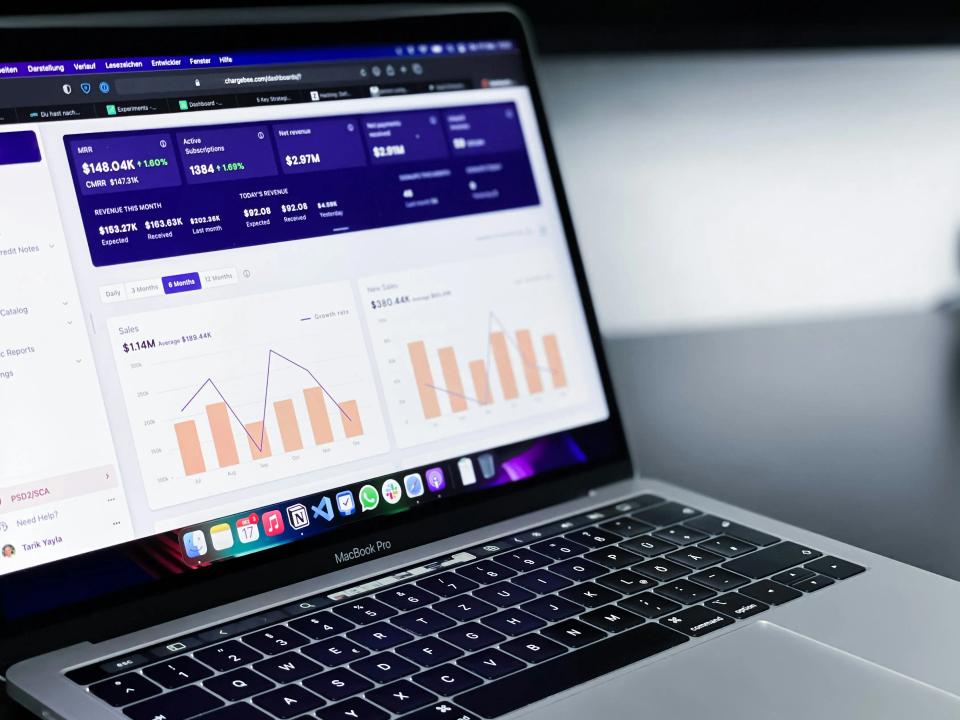Alright, let's cut through the noise. You're here because you want to rank higher. You want more eyeballs on your business, more leads, more sales. You've heard about SEO, maybe even dabbled in keywords and content. But there's an invisible force, a silent engine under the hood of your website, that could be holding you back – or, if optimized, could catapult you to the top. We're talking about technical SEO, the bedrock of modern search optimization.
Ignoring the technical health of your website is like trying to win a Formula 1 race with a sputtering engine and flat tires. It just won’t happen. In fact, studies show that 53% of mobile users abandon sites that take longer than three seconds to load – a direct hit to your bottom line, all because of a technical hiccup. This guide will pull back the curtain, revealing exactly how technical optimization impacts your SEO rankings and what you can do, starting today, to make your website a lean, mean, ranking machine.
Understanding Technical SEO Fundamentals
So, what is this beast called "technical SEO"? Is it some dark art only decipherable by code-wielding wizards? Not quite. Think of it as ensuring your website's foundation is rock-solid, making it easy for search engines like Google to find, crawl, understand, and index your content without a hitch.
Technical SEO encompasses the behind-the-scenes work that makes your website not just visible, but irresistible to search engine bots. This includes optimizing your site's speed, ensuring it’s mobile-friendly, structuring your data logically, and making sure your security is tighter than a drum. These aren't just checkboxes; they are critical signals you send to Google about your site's quality and user-friendliness.
Why does this matter, especially in 2024? Because the digital arena is more crowded and competitive than ever. Google's algorithms are constantly evolving, becoming more sophisticated in how they assess and rank websites. They prioritize sites that offer a flawless user experience, and technical soundness is a massive part of that. As Google itself states, a great user experience is key to long-term success.
Core Technical Factors Affecting SEO Rankings
Site Speed and Performance
Imagine your ideal customer, eager and ready to buy, clicking on your link. What happens if your site takes an eternity to load? They're gone. Vanished. Lost to a competitor whose site snaps to attention. Mobile page speed isn't just a suggestion; it's a command from Google, a critical factor that can make or break your mobile rankings.
Then there are Google's Core Web Vitals – LCP (Largest Contentful Paint), FID (First Input Delay), and CLS (Cumulative Layout Shift). These aren't just jargon; they're Google’s way of measuring the actual experience users have on your page regarding loading speed, interactivity, and visual stability. According to Google, optimizing for Core Web Vitals creates a better, more engaging user experience.
The correlation between loading time and rankings is undeniable. Every single second counts. A mere one-second delay in page load time can lead to an 11% drop in page views and a 7% loss in conversions. Want to dominate the search results? Make your site perform like a champion.
Website Architecture and Crawlability
Think of your XML sitemap as a detailed roadmap you hand directly to Google's crawlers. It lists all the important pages on your site, ensuring they don't miss any of your valuable content. Without a clear sitemap, you're essentially asking search engines to wander aimlessly, hoping they stumble upon your best stuff.
Your robots.txt file, on the other hand, acts as a gatekeeper. It tells search engine spiders which parts of your site they should or shouldn't crawl and index. Used wisely, it prevents the indexing of duplicate or unimportant pages, focusing Google's precious crawl budget on the content that truly matters for your rankings.
And what about internal linking? These are the arteries of your website, distributing "link equity" and guiding both users and search engines to your most important content. A well-planned internal linking structure doesn't just improve navigation; it signals to Google which pages hold the most authority, significantly boosting their visibility. Effective internal linking is a cornerstone of on-page SEO.
Mobile Responsiveness
Listen up: Google now operates on a mobile-first indexing system. This means it primarily looks at the mobile version of your website to determine its ranking. If your site offers a clunky, frustrating experience on a smartphone, you're essentially telling Google you don't care about the majority of searchers.
Responsive design is no longer a luxury; it's a fundamental requirement for survival in the digital age. Your website must adapt flawlessly to any screen size, from the smallest phone to the largest desktop monitor, ensuring text is readable and buttons are tappable. This isn't just about looking good; it's about providing a seamless experience that keeps users engaged.
Optimizing for mobile means more than just a flexible layout. Think lightning-fast load times, compressed images, and simplified navigation. Over 60% of all online searches are now performed on mobile devices, so prioritizing mobile optimization isn't just best practice; it's essential for capturing your audience.
Security and SSL Implementation
HTTPS as a ranking factor
See that little padlock icon next to a website's URL? That signifies HTTPS, and it's a big deal. Google officially confirmed years ago that HTTPS is a lightweight ranking signal. Moving from HTTP to HTTPS tells Google, and your visitors, that you take their security seriously.
This isn't just about a minor ranking boost; it's about building trust. An "Not Secure" warning in browsers is a massive red flag for users, scaring them away before they even see your offerings. Implementing SSL (Secure Sockets Layer) encrypts data exchanged between the user's browser and your server, protecting sensitive information.
If your site is still languishing on HTTP, you're not just outdated; you're actively harming your credibility and potentially your rankings. The switch to HTTPS is a non-negotiable aspect of modern technical SEO.
Impact on user trust and conversions
Imagine trying to make an online purchase on a site that screams "insecure." Would you enter your credit card details? Of course not. User trust is the currency of the internet, and an SSL certificate is a key component in earning it.
Websites without HTTPS are increasingly flagged by browsers, leading to higher bounce rates and plummeting conversion rates. Studies indicate that 85% of online shoppers will avoid an unsecured website. That padlock isn't just a symbol; it's a reassurance that translates directly into more leads and sales.
By securing your site with HTTPS, you're not only protecting your users' data but also safeguarding your business's reputation and financial success. It’s a clear signal that you value their privacy and security.
Implementation considerations
Migrating from HTTP to HTTPS isn't as simple as flipping a switch; it requires careful planning. You must ensure all your website assets – images, scripts, stylesheets – are served over HTTPS to avoid "mixed content" warnings, which can break the secure connection.
Properly implementing 301 redirects from all HTTP URLs to their HTTPS equivalents is crucial. This ensures that users and search engines are seamlessly directed to the secure version, preserving your hard-earned link equity.
Finally, update your XML sitemap to include the HTTPS URLs and notify Google Search Console of the change. This meticulous approach ensures a smooth transition and maintains your SEO performance.
Technical Elements for Enhanced Search Visibility
Schema Markup
Want to give Google a crystal-clear understanding of your content? Schema markup is your secret weapon. It's a vocabulary of tags you add to your HTML to help search engines understand the meaning and context behind your information, going far beyond simple keywords.
There are hundreds of schema types available, covering everything from articles and products to local businesses, events, and recipes. Implementing the correct schema allows search engines to not just crawl your content, but to truly comprehend it. This structured data helps Google categorize and display your information more effectively.
The payoff? Rich snippets in search results. These are the enhanced listings that include star ratings, prices, review counts, or event dates, making your entry far more compelling. Websites leveraging schema markup can see click-through rates jump by as much as 30%.
Types of schema
The beauty of schema lies in its specificity. If you run a local business, LocalBusiness schema can display your address, phone number, and opening hours directly in search results. Selling products? Product schema can showcase price, availability, and review ratings.
Publishing content? Article or BlogPosting schema helps Google understand authorship and publication dates. Hosting an event? Event schema can highlight dates, times, and locations. Choosing and correctly implementing the most relevant schema types for your content is key to unlocking these enhanced visibility features.
Don't let your content get lost in a sea of plain blue links. Use schema to make it stand out.
Implementation benefits
The primary benefit of schema markup is the potential to earn rich snippets, which significantly enhance your search engine results page (SERP) listings. These eye-catching additions make your website more prominent and informative at a glance, directly leading to higher click-through rates.
Beyond rich snippets, schema helps search engines better understand the relationships between entities on your site and across the web. This deeper understanding can contribute to improved rankings for relevant queries, especially as search engines rely more on semantic understanding. It's about providing context that machines can easily process.
Think of it as giving Google a VIP pass to your content's most important details. This clarity can lead to better indexing and a stronger overall search presence.
Rich snippet opportunities
The opportunities to gain rich snippets are vast and varied, depending on your content type. For e-commerce sites, product schema can display pricing and availability, instantly attracting ready-to-buy customers. For recipe blogs, recipe schema can show cooking times, ratings, and even calorie counts.
Review sites can leverage review schema to display aggregate ratings. Service businesses can use schema to highlight their service areas and customer testimonials. Each type of rich snippet offers a unique way to capture attention and drive more qualified traffic from search results.
Explore the full range of schema types at Schema.org and identify all relevant opportunities for your website. Don't leave these powerful visibility boosters on the table.
URL Structure
Your website's URLs are more than just web addresses; they are signposts for both users and search engines. Clean, descriptive URLs are easier to understand, share, and remember, contributing to a better user experience and improved SEO. Strive for URLs that are short, keyword-rich (but not stuffed), and logically structured.
Use lowercase letters and hyphens to separate words in your URLs – for example, yourdomain.com/awesome-product-category/amazing-product-name. Avoid using underscores, spaces, or unnecessary parameters that can make URLs look messy and difficult for search engines to parse. A consistent, clean URL structure across your site signals professionalism and clarity.
Common pitfalls include overly long URLs, dynamic URLs filled with cryptic characters (e.g., ?id=123&session=xyz), or using non-descriptive terms. These issues can confuse search engine crawlers and dilute the perceived relevance of your pages.
Clean URL best practices
The golden rule for URLs? Keep them simple and intuitive. A user should be able to guess the content of a page just by looking at its URL. This means incorporating relevant keywords naturally, reflecting the page's title or main topic.
Always use hyphens (-) to separate words, not underscores (_). Search engines treat hyphens as word separators, while underscores can sometimes cause words to be joined together, impacting keyword recognition. Stick to lowercase letters to avoid potential duplicate content issues with servers that treat uppercase and lowercase URLs differently.
Finally, aim for brevity. Shorter URLs are generally preferred by users and are easier to share. Remove unnecessary stop words (like "a," "the," "and") if it helps shorten the URL without losing its meaning.
URL optimization techniques
When crafting your URLs, think about your site's hierarchy. A logical folder structure reflected in your URLs (e.g., domain.com/category/subcategory/page-name) helps both users and search engines understand how your content is organized. This can also help distribute link equity more effectively.
Ensure your primary keyword for the page is included in the URL, ideally as close to the domain name as possible. However, avoid keyword stuffing; the URL should still read naturally. For example, instead of domain.com/buy-red-shoes-best-red-shoes-online, opt for domain.com/red-shoes.
Regularly audit your URLs for any issues like excessive length, unnecessary parameters, or inconsistent formatting. Use 301 redirects for any URLs you change to preserve SEO value and avoid broken links.
Common URL issues to avoid
One of the most common issues is the use of dynamic URLs generated by content management systems, which often include multiple parameters like &id=, &session=, etc. While search engines have gotten better at crawling these, static, keyword-rich URLs are still generally preferred for SEO. Many CMS platforms offer options to create search-engine-friendly URLs.
Another frequent problem is inconsistent use of trailing slashes (e.g., domain.com/page vs. domain.com/page/). This can lead to duplicate content issues if both versions are accessible and indexable. Choose one format and stick to it, using redirects or canonical tags to enforce your preference.
Be wary of using dates in URLs for evergreen content (e.g., domain.com/2024/01/my-awesome-post). If the content remains relevant for years, the date can make it appear outdated. For news articles, dates are fine, but for core service or product pages, omit them.
Site Navigation and Information Architecture
Can users effortlessly find what they're looking for on your site, or do they feel like they're trapped in a bewildering labyrinth? Your site's navigation and overall information architecture are critical to user satisfaction. A clear, intuitive structure not only keeps visitors happy but also signals to Google that your site is well-organized and valuable.
A poor user experience, often caused by confusing navigation, leads to high bounce rates and low engagement – negative signals that can torpedo your rankings. According to Forrester Research, a well-designed UX can yield conversion rates up to 400% higher. This underscores the direct link between user-centric design and business success.
Think of your navigation as the primary tool for guiding users through your sales funnel. If it's broken or confusing, you're losing potential customers at every click.
User experience impact
The impact of site navigation on user experience cannot be overstated. When users land on your site, they expect to find information quickly and easily. If your main menu is cluttered, labels are ambiguous, or key pages are buried deep within the site, frustration mounts rapidly.
This frustration translates directly into negative SEO signals. High bounce rates (users leaving quickly) and low time-on-page tell Google that your site isn't meeting user needs. Conversely, a site that's easy to navigate encourages exploration, leading to more page views and longer session durations – positive signals that can boost your rankings.
Ultimately, a positive user experience fostered by clear navigation leads to greater user satisfaction, increased trust, and a higher likelihood of conversion.
Navigation optimization
Optimizing your site navigation starts with simplicity and clarity. Your main navigation menu should feature your most important top-level pages, using concise, descriptive labels that users will instantly understand. Avoid jargon or overly clever terms that might confuse visitors.
Ensure your navigation is consistent across all pages of your website. Users should always know where they are and how to get where they want to go. This consistency also applies to mobile devices; your navigation must be fully responsive and easy to use on smaller screens, often requiring a "hamburger" menu or similar solution.
Consider user behavior when designing your navigation. Use analytics to understand which pages are most popular and how users typically move through your site. This data can inform decisions about what to include in your main navigation versus secondary navigation or footer links.
Breadcrumb implementation
Breadcrumbs are a secondary navigation scheme that shows users their current location within the site's hierarchy. Typically displayed at the top of a page, they look something like: Home > Category > Subcategory > Current Page. They serve as a clear trail, allowing users to easily navigate back to previous sections.
Implementing breadcrumbs offers several benefits. They improve user orientation, reducing frustration and making it easier for visitors to explore your site more deeply. This can lead to lower bounce rates and increased engagement.
From an SEO perspective, breadcrumbs help search engines understand your site structure and can even appear in search results, providing additional context and potentially improving click-through rates. Most modern CMS platforms offer easy ways to implement breadcrumbs, often with schema markup included.
Measuring Technical SEO Success
Key performance indicators (KPIs)
How do you know if your technical SEO efforts are actually moving the needle? You need to track the right metrics. Key performance indicators for technical SEO include organic search traffic (is it increasing?), crawl errors reported in Google Search Console (are they decreasing?), and site speed scores from tools like PageSpeed Insights, particularly your Core Web Vitals.
Beyond these direct technical metrics, monitor user engagement signals like bounce rate, average session duration, and pages per session. Improvements in technical SEO should lead to a better user experience, which these metrics reflect. Ultimately, look at conversion rates – are more visitors taking the desired actions on your site?
Also, keep an eye on your indexing status. How many of your pages are indexed by Google? Is this number growing appropriately as you add new content, or are there signs of index bloat or crawlability issues?
Tools for technical SEO analysis
You're not navigating in the dark; a powerful arsenal of tools is available to help you diagnose, monitor, and improve your site's technical health. Google Search Console is non-negotiable – it's Google's direct line of communication, providing invaluable data on crawl stats, indexing issues, manual actions, and Core Web Vitals performance. Google Search Console is a free service that helps you monitor your site's presence in Google Search results.
For in-depth site audits, a crawler like Screaming Frog SEO Spider is indispensable. It spiders your website like a search engine, identifying broken links, redirect chains, duplicate content, and a host of other technical issues. Other comprehensive SEO platforms like Ahrefs, SEMrush, and Moz Pro also offer robust technical site audit features.
For performance testing, Google's PageSpeed Insights, GTmetrix, and WebPageTest provide detailed reports on loading times and offer specific recommendations for improvement. Leveraging these tools systematically will give you a clear picture of your technical SEO landscape.
Monitoring and reporting methods
Technical SEO is not a one-and-done task; it requires ongoing vigilance. Set up regular monitoring for your key technical KPIs. Many tools allow for automated alerts for critical issues, such as a sudden spike in server errors (5xx) or a drop in pages crawled per day.
Create a dashboard, either within your chosen SEO platform or using a tool like Google Looker Studio, to track your technical SEO metrics over time. This allows you to spot trends, measure the impact of your optimization efforts, and identify new areas for improvement. Regular reporting, even if it's just for your internal team, helps maintain focus and accountability.
Schedule periodic comprehensive technical SEO audits (e.g., quarterly or bi-annually) to catch any new issues that may have arisen due to site updates, content changes, or shifts in search engine algorithms. This proactive approach is key to sustained technical health.
Common Technical SEO Issues and Solutions
Duplicate content
Duplicate content is a silent saboteur of your SEO efforts. It occurs when identical or substantially similar content appears on multiple URLs, confusing search engines about which version to rank and diluting your ranking signals. This can happen due to www vs. non-www versions, HTTP vs. HTTPS, printer-friendly pages, or syndicated content without proper attribution.
The primary solution for duplicate content is the canonical tag (rel="canonical"). This HTML element tells search engines which URL represents the master copy of a page. Implementing canonical tags correctly ensures that ranking signals consolidate to your preferred URL.
Regularly use site crawlers to identify potential duplicate content issues. Also, ensure your internal linking consistently points to the canonical versions of your pages.
Broken links and 404 errors
Clicking a link only to land on a "404 Page Not Found" error is a universally frustrating experience. Broken links, both internal (pointing to other pages on your site) and external (pointing to other websites), damage user experience and can negatively impact your SEO. They signal to search engines that your site may be poorly maintained.
Regularly crawl your website to find broken links. For internal broken links, either update the link to point to the correct live page or, if the page no longer exists, redirect the broken URL (using a 301 redirect) to the most relevant alternative page. Google Search Central recommends fixing 404 errors to improve user experience.
For broken external links, you can either remove the link or try to find an updated URL for the resource. Minimizing 404 errors helps preserve crawl budget and keeps users on a smooth path through your content.
Index bloat
More isn't always better when it comes to indexed pages. Index bloat happens when search engines index a large number of low-value, thin, or duplicate content pages from your site (e.g., tag pages, internal search results, old archives). This can dilute the perceived quality of your overall site and waste valuable crawl budget that could be spent on your important pages.
To combat index bloat, strategically use the robots.txt file to disallow crawling of entire sections of your site that don't need to be indexed. For individual pages that should not appear in search results, use the "noindex" meta tag.
Conduct regular content audits to identify and either improve, consolidate, or de-index low-quality pages. A leaner, higher-quality index is generally better for SEO.
Canonical issues
While canonical tags are the solution to duplicate content, their incorrect implementation can create a new set of problems. Common canonical issues include pointing a canonical tag to a non-existent page, having multiple canonical tags on a single page, or canonicalizing a page to a URL that is itself redirected.
Ensure that every indexable page on your site has a self-referencing canonical tag (pointing to itself) unless it's a duplicate version, in which case it should point to the master version. Be consistent with your URLS in canonical tags (e.g., always use the HTTPS, www or non-www version you've chosen as standard).
Double-check canonical tags after site migrations or major redesigns. Tools like Screaming Frog can help you audit your canonical tag implementation across your entire site.
Future-Proofing Technical SEO
Emerging technologies
The digital landscape is in constant flux. Emerging technologies like Progressive Web Apps (PWAs), which offer app-like experiences in a browser, and serverless architectures are reshaping how websites are built and delivered. Staying abreast of these developments is crucial for maintaining a competitive technical edge.
Voice search optimization is another area gaining traction as smart speaker adoption continues to rise. This often involves structuring content for direct answers and optimizing for conversational queries. Gartner predicted that 30% of all browsing sessions would include voice search by 2020, and its influence continues to grow.
Being an early adopter or at least an informed observer of these trends can provide significant advantages. The goal is to ensure your technical infrastructure can support new ways users interact with content.
AI and machine learning implications
Artificial intelligence (AI) and machine learning (ML) are no longer futuristic concepts; they are deeply embedded in search engine algorithms like Google's RankBrain and BERT. These systems are continuously improving their ability to understand user intent, content quality, and contextual relevance. This means your technical SEO must facilitate the delivery of high-quality, semantically rich content more effectively than ever.
AI is also becoming a powerful ally in performing technical SEO tasks. AI-powered tools can analyze vast amounts of data to identify complex patterns, anomalies, and optimization opportunities that might be missed by human auditors. Google has openly stated its increasing reliance on AI for search ranking.
Preparing for an AI-driven future in search means focusing on creating genuinely valuable, well-structured content and ensuring your site is technically flawless to allow AI to easily interpret and rank it.
Preparing for future algorithm updates
Google rolls out thousands of algorithm updates each year, most small, some significant. Chasing every minor tweak is an exhausting and often fruitless endeavor. The most resilient strategy for future-proofing your technical SEO is to focus on the fundamentals: building a high-quality, user-centric website that adheres to Google's webmaster guidelines.
Prioritize creating an exceptional user experience. This includes fast load times, mobile-friendliness, intuitive navigation, and, of course, valuable, engaging content. A technically sound website that genuinely serves its users is less likely to be negatively impacted by algorithm updates.
Stay informed about major algorithm updates and industry best practices, but don't let them distract you from the core principles of good technical SEO and user-first design. This approach builds long-term ranking stability.
Case Studies
Real-world examples of technical optimization success
Imagine an e-commerce store, once languishing on the fifth page of Google, suddenly seeing its product pages climb to the top spots. This isn't magic; it's often the result of a meticulous technical SEO overhaul – fixing crawl errors, speeding up load times, and implementing proper schema markup. We've seen it happen.
Consider a content-rich blog whose organic traffic had plateaued despite publishing great articles. A deep dive into its technical health revealed issues with internal linking and mobile usability. Addressing these foundational problems unlocked a new wave of growth, proving that even the best content needs a technically sound platform.
These stories aren't isolated incidents. They are consistent outcomes when businesses commit to resolving the underlying technical issues that throttle their online potential.
Before and after metrics
The proof is in the numbers. One of our clients, a local service provider, saw a 45% increase in organic leads within three months after we addressed critical site speed issues and optimized their Core Web Vitals. Their bounce rate dropped by 20% as users enjoyed a faster, smoother experience.
Another client, in the competitive SaaS space, experienced a 60% uplift in keyword rankings for their core terms after we restructured their site architecture for better crawlability and implemented comprehensive schema markup. This directly translated to a significant increase in demo requests. Technical SEO isn't an expense; it's an investment with measurable ROI.
These metrics demonstrate the tangible, business-driving impact of dedicated technical optimization.
Lessons learned
The most profound lesson from countless technical SEO projects is this: technical optimization is not optional; it's foundational. You simply cannot build sustainable online success on a shaky technical base. All your content marketing and link-building efforts will be handicapped without it.
Another key takeaway is that consistency trumps sporadic effort. Small, ongoing improvements to technical health often yield far greater long-term results than infrequent, massive overhauls. It’s about continuous refinement.
And finally, always, always prioritize the user. Technical changes that improve user experience – faster speeds, easier navigation, better mobile accessibility – are almost invariably rewarded by search engines. What's good for your users is good for Google.
Implementation Strategy
Step-by-step technical audit process
Ready to get your hands dirty? A thorough technical SEO audit is your starting point. Begin by crawling your entire website using a tool like Screaming Frog SEO Spider or the site audit feature in Ahrefs/Semrush. This will give you a raw data dump of URLs, status codes, meta tags, and more.
Next, dive into Google Search Console. Scrutinize the Coverage report for indexing errors, check the Core Web Vitals report for performance issues, and look for any manual actions or security issues. Use Google's PageSpeed Insights to test key pages for loading speed on both mobile and desktop.
Systematically work through the checklist of technical elements: XML sitemap validity, robots.txt configuration, HTTPS implementation, mobile-friendliness (test with Google's Mobile-Friendly Test), schema markup validation, URL structures, internal linking patterns, and duplicate content checks. Document everything.
Prioritization framework
Your audit will likely uncover a laundry list of issues, from minor warnings to critical errors. Don't get overwhelmed. The key is to prioritize effectively. A common framework is to assess issues based on two factors: potential impact on SEO/UX and the level of effort required to fix them.
Address critical, site-wide problems first – things like incorrect robots.txt blocking your whole site, widespread indexing issues, or major security vulnerabilities. These are your "red alert" items. Then, focus on "high-impact, low-effort" fixes – these are your quick wins that can deliver noticeable improvements relatively easily.
For more complex or time-consuming issues, weigh the potential benefit against the resources required. Industry best practice suggests tackling items that offer the highest ROI first. This ensures you're always working on what matters most.
Resource allocation tips
Technical SEO can be demanding, requiring specific expertise and dedicated time. If you don't have a seasoned technical SEO specialist in-house, seriously consider partnering with an agency or consultant (like us here at CaptivateClick!). The cost of expert help is often far less than the cost of lost rankings and revenue.
Allocate specific, recurring time slots for technical SEO monitoring and maintenance. It's not a project you complete once and forget; it's an ongoing process of refinement and adaptation. This might be a few hours per week or a dedicated day per month, depending on your site's size and complexity.
Invest in the right tools. While some free tools are excellent (like Google Search Console), premium SEO platforms and crawlers can save you hundreds of hours and provide deeper insights. Consider these tools an investment in your site's future success.
Conclusion
We've journeyed deep into the engine room of your website, exploring the critical gears and levers of technical SEO. From the lightning speed demanded by users to the structured data craved by search engines, the message is clear: the technical integrity of your website is not merely a footnote in your digital strategy; it is the very foundation upon which your online visibility, customer acquisition, and ultimate success are built.
To ignore these technical underpinnings is to willingly cede ground to your competitors, leaving precious leads, sales, and market share on the table. It's like trying to shout in a crowded stadium with a megaphone that's unplugged – your message, no matter how brilliant, simply won't be heard effectively.
So, what now? Don't let this knowledge remain passive. Take decisive action. Begin with a simple health check: run your site through Google PageSpeed Insights and review your Google Search Console reports. Identify just one or two key areas from this guide – perhaps mobile speed or schema markup – where you know your site is falling short, and commit to making tangible improvements this month. The path to technical SEO excellence is paved with consistent, focused effort.
Ultimately, if you desire to not just compete but to truly dominate your digital space, to see your website ascend the search rankings and convert visitors into loyal customers, then you must embrace technical optimization with unwavering commitment. It is the invisible force that powers visible triumphs, transforming your website from a digital brochure into a high-performance engine for growth. Make your website a place Google loves to send traffic to, and users love to experience.













